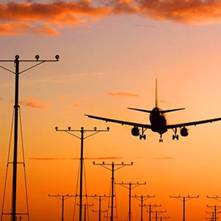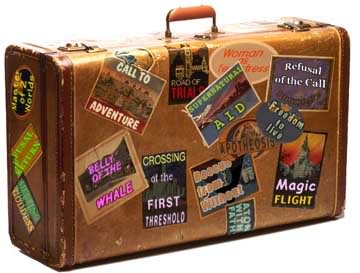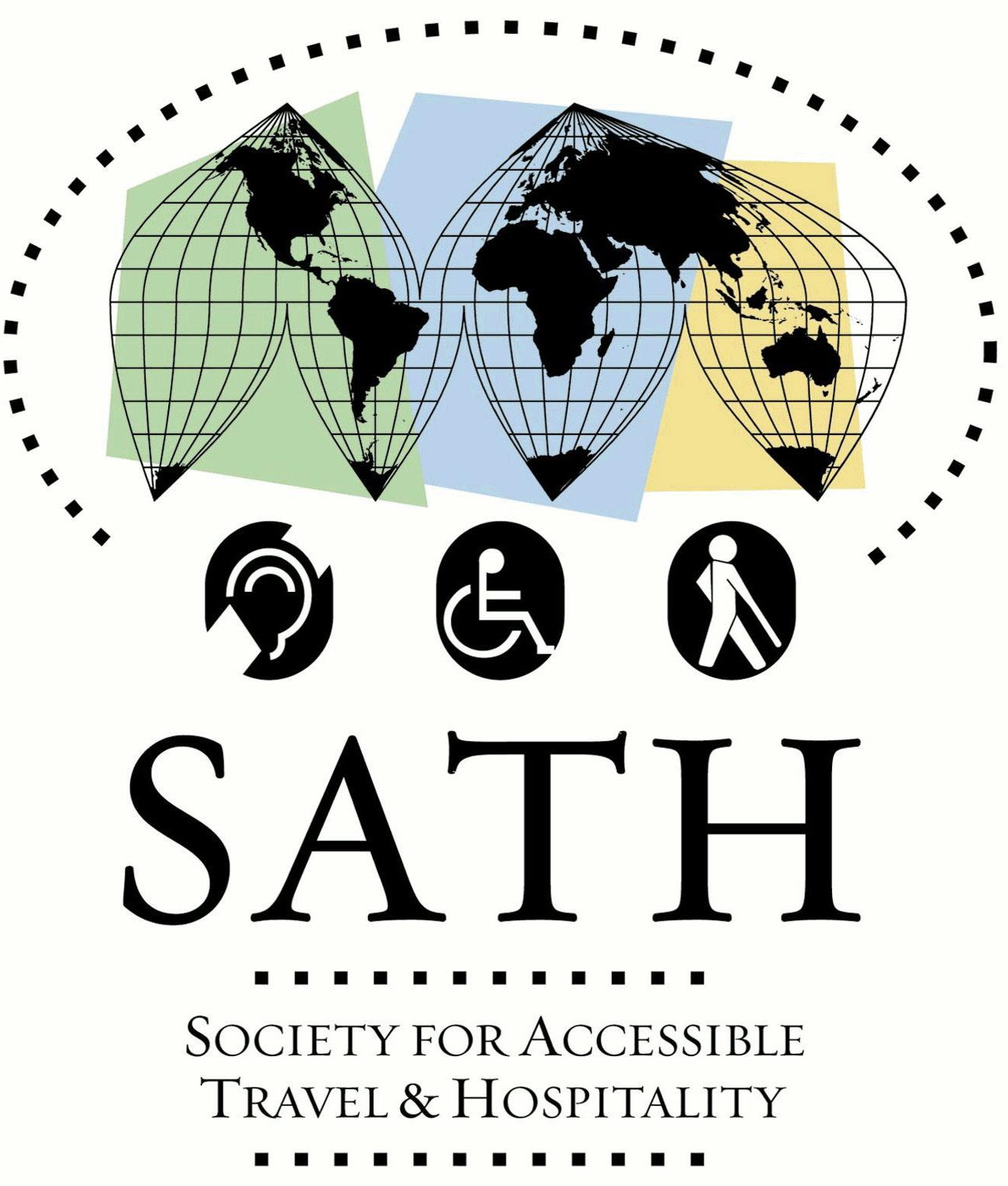In the past few weeks, several companies and organizations have asked us to compile a Top 10 “Tip” List to help the autistic travelers and accompanying caregivers. Although special needs travel tends to be multi-faceted and somewhat individualized in nature, here are Autistic Globetrotting’s Ten Golden Rules of successful travel.

#1- Call ahead and flag your reservation
Call the airline’s customer service, the cruise line’s special needs department, the hotel concierge or front desk, and of course future tour guides to explain your situation. Ask for needed accommodations, such as preferred seating (bulkhead or aisle), individualized lodging (quiet and adjoining rooms) and specific dietary requests (i.e. food allergies). In this way, you’re not only helping the companies serve you better, but also informing them of the disability that might become misinterpreted in certain situations—temper tantrums at an airport check point or during a flight can be misconstrued and potentially disastrous.
After touching base with your future friends, make a note of their names, and ask for a response e-mail or fax confirming the agreed-upon details. Then, keep in touch at least 2-3 times before the planned travel starts!
*Remember that assigned plane seats and hotel adjoining rooms can change without any notices, so check your reservation on line weekly and take notice of any unwanted alterations.
#2- Don’t plan the Itinerary from Hell
Some of the more ecstatic tourists have the belief that they should spend their limited time traveling to the fullest, plan the itinerary from hell, and either tire themselves out or end up disappointed from not “completing” it all. Autistic travelers more so may feel sensory overloaded, tired, and out of sorts if made to follow rigorous plans, especially if accustomed to their more sedentary everyday life.
As a rule of thumb: Never plan any sightseeing on actual travel days since the time spent on the airplane, train, ship, or car provides enough excitement. Try to plan tours or activities that are four hours or less, including “fun” or down-time for the entire group—allocated during midday and evening— and practice the art of flexibility when activities don’t work out as planned. Travel is about experiencing a place as a whole, so sampling the local dinner in a neighborhood restaurant or watching foreign cartoons in the hotel room qualify too.
Last but not least, keep in mind that if you really enjoy a place, you can always go back and revisit. It actually feels more familiar and welcoming the second time around.
#3- Prepare your travelers and double check your arrangements
To pique the interest of your young autistic globetrotter, you should try to talk about the vacation and different locations in detail using picture books, articles, postcards, and movies. Doing so will not only help alleviate any fears or anxieties the person may have about the trip, but can create genuine interest in the history, geography, and culture of the intended travel destination.
It is equally helpful to go over the travel arrangements with a family member or friend to make sure there is no detail you have overlooked in the initial planning stage. Frequent mistakes are incorrect hotel arrival dates when traveling transatlantic or trans-pacific, as well as not allocating enough time in between flight connections. Since these errors can happen anytime and are universal to all travelers not even the most seasoned globetrotter is totally immune. Last year, my husband discovered that I had mistakenly booked our Australian hotel a day too late, as I had overlooked the date differences—better known as that pesky International Dateline—between leaving Los Angeles and arriving in Melbourne. By having him go over the travel details. We could discover the mistake and correct it in plenty of time, avoiding the outcome of arriving tired after a long flight with no place to stay.

#4 Begin packing sooner than later
While packing is the last stage, it should never be underestimated. Time is needed to check that all the supplies, including comfortable clothes and favored bedding are all safely stowed, since an absence of those can cause the worst meltdowns. Early packing provides time to order and purchase any items or supplies you are currently missing, and to pack the little doodads (e.g. stuffed animals and pictures) your autistic person cannot travel without. In lieu of packing a separate suitcase for each family member; pack two or three day outfits for each family member in each of your checked suitcases. This way, even if one piece of luggage is lost, everyone still has some apparel to use, and you won’t spend your vacation shopping for basic necessities instead of sightseeing.
The best time to start packing is a week in advance (you can use my packing list) and never leave it to the night before; as it will render you irritable and exhausted, which in turn is bound to stress everyone (especially your autistic globetrotter).
#5 Arrive early and pre-everything while you travel
Arrive at the airport, port, train, or bus station early and ask to board among the first. Pre-boarding will give you ample time to deal with any unexpected problems, as well as to familiarize your autistic traveler to their new surroundings. Furthermore, that extra time can be used to wipe the seat clean, hand each family member their toys or food, and use the restroom well before everyone else boards.
#6 Expect the unexpected, always!
Note: Before booking your intended trip, verify whether your monetary deposits are refundable. If they are not, consider purchasing travel insurance, especially if you can’t bear the financial loss from a possible cancellation.
In today’s world, where airlines and hotels charge you a hefty re-booking fee, and a fully refund from cruise lines and organized tours is close to impossible, insurance can be a helpful tool in the event of cancellations well as covering your meals and hotel in case of severe delays.
My pet peeve is the chance of delayed or lost luggage which, unfortunately, has increased in frequency over the last few years, especially on US domestic flights. Although not preventable in nature, you can ameliorate the situation by having insurance, which can cover some of the loss, as well as by packing your hand luggage adequately.
Every family or group member should carry one hand luggage with at least two days’ worth of personal clothing, electronics and medicines. All the autistic person’s preferred clothing should be packed in the hand luggage, as well as include any favored foods, books, or movies. By doing so, you will not have to spend your vacation running around your city of destination looking for these items and trying to replace them.
#7 What to carry with you at all times: M.E.D, mini-kits and a recent photo
The worst accidents and mishaps tend to occur during vacations! As such, the wisest thing to do is to be prepared, very prepared! Create a mini-kit and always have it with you, preferably in your bag or fanny pack.
It should always include:
• First Aid items such as Neosporin, Band-Aids, or Benadryl cream or spray.
• Bug and solar protection—the higher SPF, the better—just make sure it is hypoallergenic.
• Kid’s medications with a collapsible cup to drink water.
• Headache and diarrhea pills, with an extra pair of kid’s underwear (just in case).
• At least one extra pair of glasses per any glasses wearing member ( there’s nothing worse than trying to visit a museum or amusement park half ‘blind’).
• Mini sized supply of Wet Wipes, tissues, toilet paper roll, and Lysol spray to sterilize the toilet seat (for those who can’t stand or squat in public toilets).
• A recent picture of your child in case your child wanders away or gets lost, as many times the picture in the passport is outdated!
My tip: snap a picture of your kid with your camera daily during the trip you can describe every single detail (including the clothing) to authorities if necessary.
When traveling with autistic people never travel without M.C.D:
•Medicines for the duration of your vacation plus an extra a week supply in your hand luggage (never in checked luggage or in the car’s trunk, as it can spoil).
• Carry an autism identification card from a national autism organization. In addition, you can carry a small printed handout card explaining the signs of autism so you can raise awareness and educate others on your trip, as well as explain certain situations that may arise.
• Documentation: You should carry copies of doctor’s, psychologist’s, or psychiatrist’s letters explaining your autistic person’s unusual behaviors, conditions, or allergies, as well as copies of letters from police or child services detailing acts of violent meltdowns, so you can show them to the authorities if needed. Some parents have found it useful to put their child’s info on a flash drive or download a medical application like Biomed (or carry a mini bio-meds, illnesses, allergies).

#8 Souvenirs as perks
Souvenirs are a wonderful way not only to encourage good behavior during travel but to get your autistic globetrotter interested in many topics like history, geography, culture, and art appreciation. Over the years, my son has learnt spelling and maps from tee-shirts, geography from coin collecting, and history from the various postcards and stamps.
Encouraging collecting can benefit your autistic person in other ways like promoting a sense of ownership and providing conversation starters to help with socialization. My friend’s daughter brought her rather extensive international doll collection to her school on a “show and tell” day. She got to explain the origin of each doll and befriended two new friends (who had no idea until then the girl they had labeled “strange” was a world-class traveler who had been to many of the places described in their social studies books).
Many travelers don’t realize that souvenirs (loosely translated as remembrances or memories) do not necessarily need to be store-bought or factory-made but any object that comes from those visited locations. In fact, some of the more interesting souvenirs that we’ve come across over the years have been collections of seashells, rocks, hotel keys, transportation tickets, restaurant napkins, and even various department store bags.
#9 Don’t neglect the sibling and your significant other
Many parents become so focused on the needs of their autistic kids that they sometimes forget the needs of their typical children. From the very early stages of planning ask for their input: where they would like to go, and what they would want to see, and make sure you incorporate that into your travel plans.
In fact, on every vacation day there should at least one special activity for each kid to enjoy per day.
General rules to abide by:
Don’t assume they like everything or anything, especially if are teens and never sign them up for any activities, unless you get their approval first!
In fact, try to put them in different activities than their autistic siblings and give them some breathing space!
Since family life so strongly revolves around the autistic person, there is almost no space left for that “significant” other!
Vacation time is the perfect time to spend some “us” time too.
Whether you choose babysitting services or the goodwill of family members, try to dedicate at least one evening per week vacation for you and your significant to engage in an activity or go to a place you both like, to rekindle your relationship and reconnect with each other.
Last but not least…
#10 Give yourself the proper sendoff
Start your vacation a day earlier than everyone else!
After acting as your family vacation planner, personal shopper, and professional packer you deserve your own space and time. Spend the day before your intended vacation taking much needed “me” time: and go and have your nails done, get a facial, walk around the mall eyeing the latest fashions—anything that will relax you and put you in a great mood. Go to sleep at your regular time or even a tad earlier; after all, tomorrow your adventure is about to unfold.
What are your special tips to help with autistic travel?
We would love to hear from you.
Margalit Francus lives in sunny Southern California and has traveled around the world extensively.She writes about the two topics closest to her heart :Travel and Autism.

